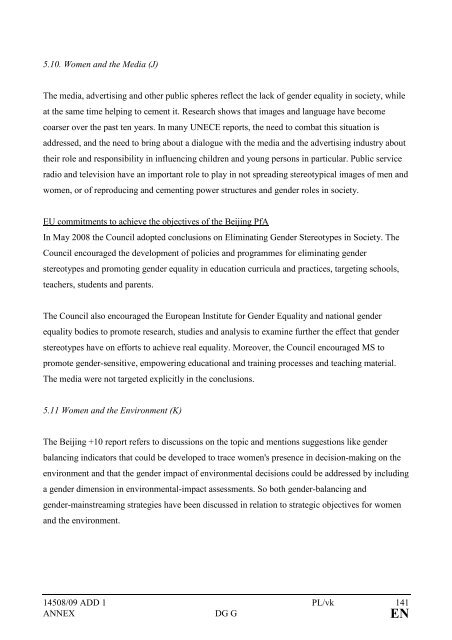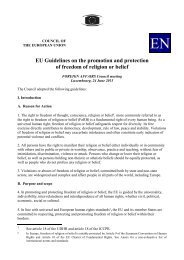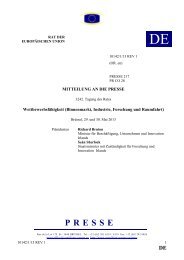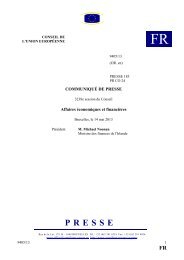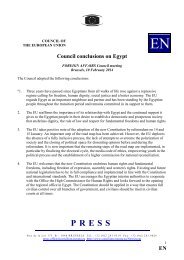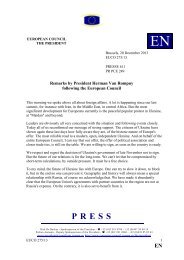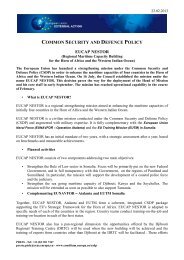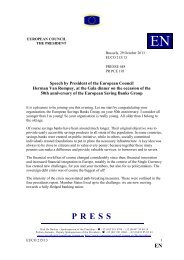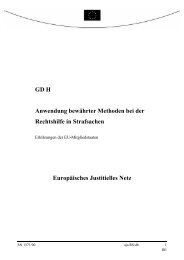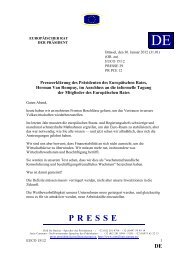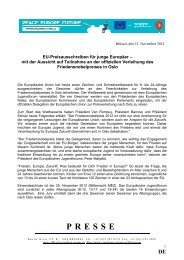14508/09 ADD 1 PL/vk 1 DG G COUNCIL OF THE ... - Europa
14508/09 ADD 1 PL/vk 1 DG G COUNCIL OF THE ... - Europa
14508/09 ADD 1 PL/vk 1 DG G COUNCIL OF THE ... - Europa
Create successful ePaper yourself
Turn your PDF publications into a flip-book with our unique Google optimized e-Paper software.
5.10. Women and the Media (J)<br />
The media, advertising and other public spheres reflect the lack of gender equality in society, while<br />
at the same time helping to cement it. Research shows that images and language have become<br />
coarser over the past ten years. In many UNECE reports, the need to combat this situation is<br />
addressed, and the need to bring about a dialogue with the media and the advertising industry about<br />
their role and responsibility in influencing children and young persons in particular. Public service<br />
radio and television have an important role to play in not spreading stereotypical images of men and<br />
women, or of reproducing and cementing power structures and gender roles in society.<br />
EU commitments to achieve the objectives of the Beijing PfA<br />
In May 2008 the Council adopted conclusions on Eliminating Gender Stereotypes in Society. The<br />
Council encouraged the development of policies and programmes for eliminating gender<br />
stereotypes and promoting gender equality in education curricula and practices, targeting schools,<br />
teachers, students and parents.<br />
The Council also encouraged the European Institute for Gender Equality and national gender<br />
equality bodies to promote research, studies and analysis to examine further the effect that gender<br />
stereotypes have on efforts to achieve real equality. Moreover, the Council encouraged MS to<br />
promote gender-sensitive, empowering educational and training processes and teaching material.<br />
The media were not targeted explicitly in the conclusions.<br />
5.11 Women and the Environment (K)<br />
The Beijing +10 report refers to discussions on the topic and mentions suggestions like gender<br />
balancing indicators that could be developed to trace women's presence in decision-making on the<br />
environment and that the gender impact of environmental decisions could be addressed by including<br />
a gender dimension in environmental-impact assessments. So both gender-balancing and<br />
gender-mainstreaming strategies have been discussed in relation to strategic objectives for women<br />
and the environment.<br />
<strong>14508</strong>/<strong>09</strong> <strong>ADD</strong> 1 <strong>PL</strong>/<strong>vk</strong> 141<br />
ANNEX <strong>DG</strong> G EN


